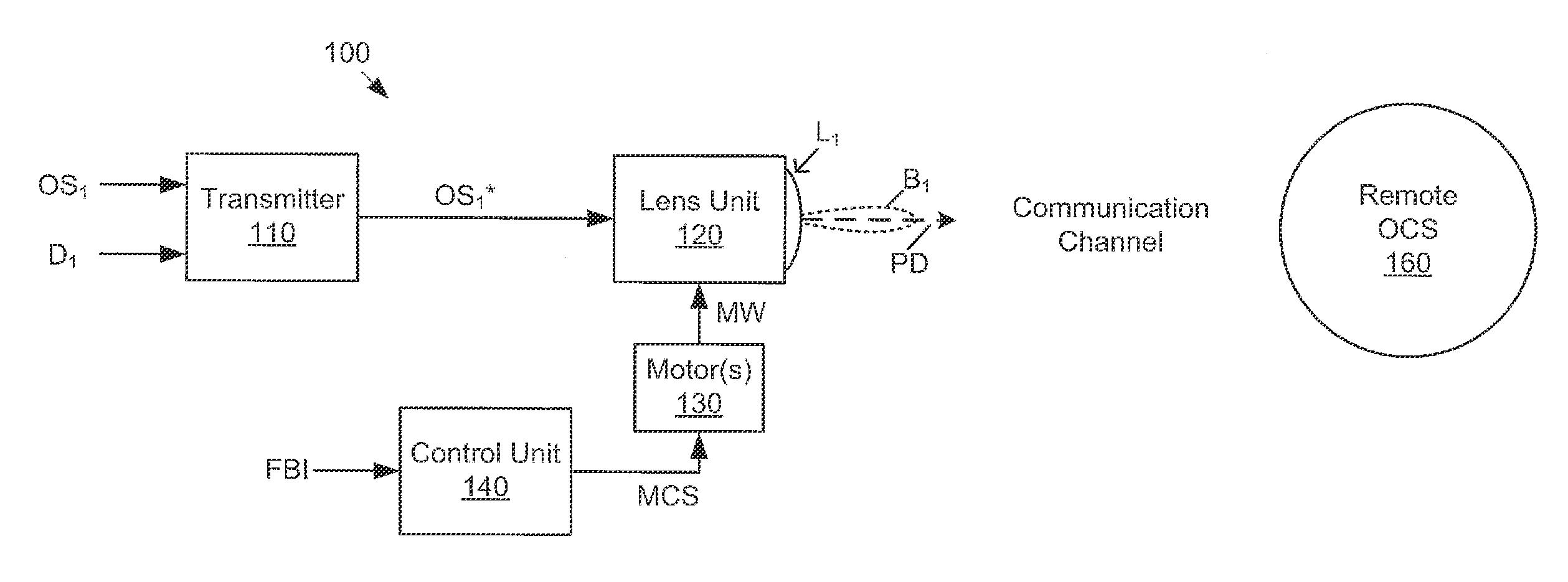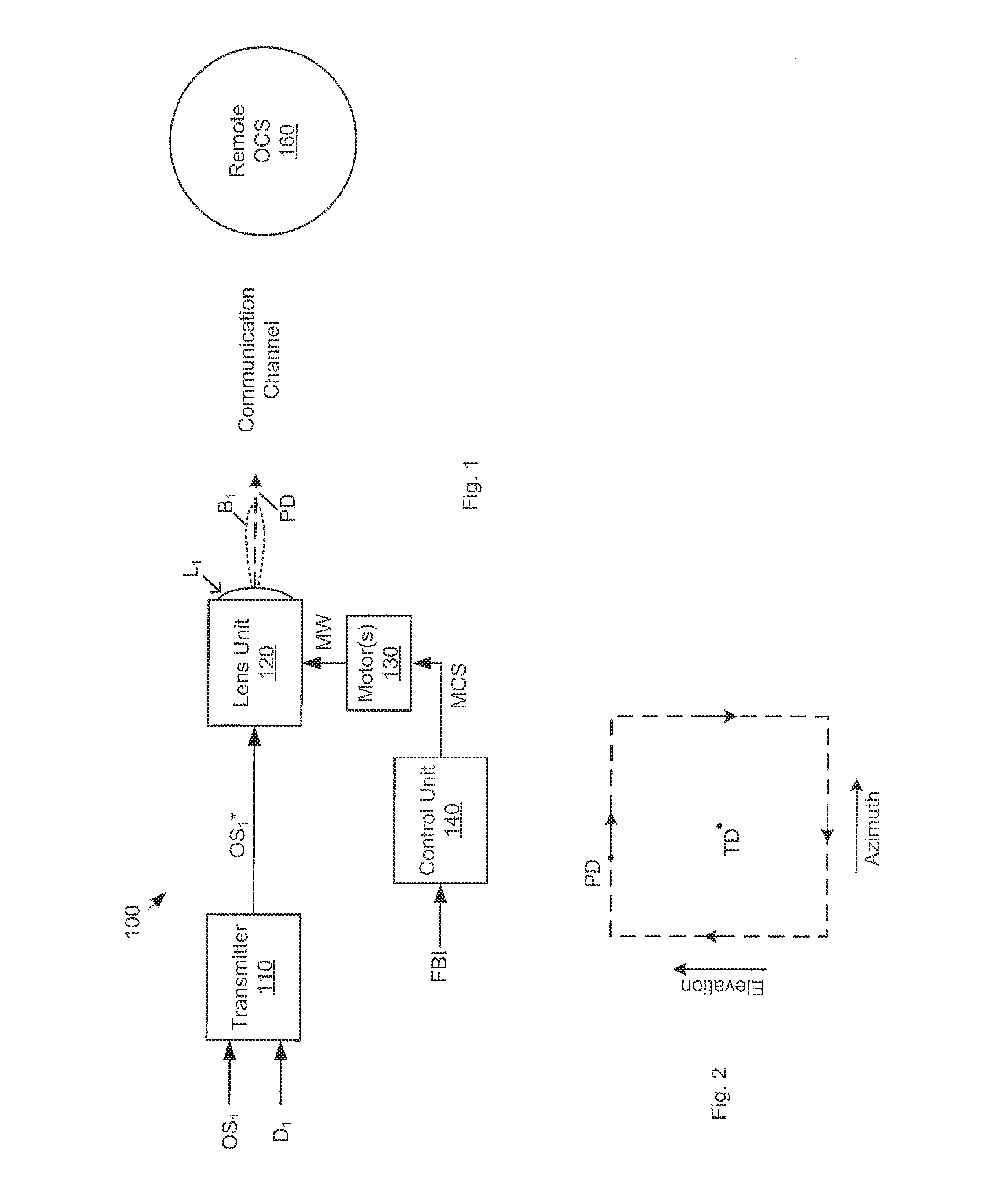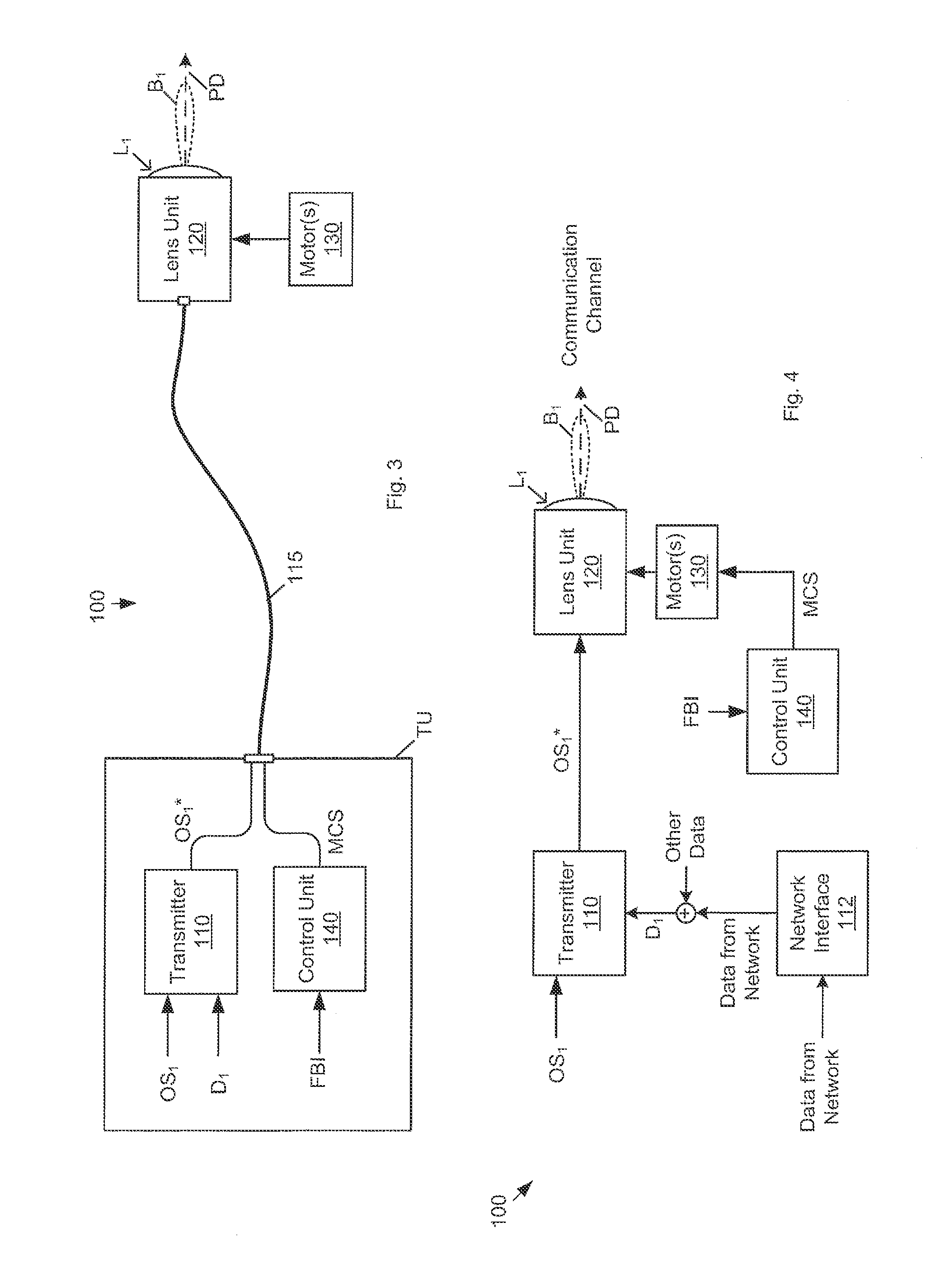Active Tracking for Free-Space Optical Communication Systems
- Summary
- Abstract
- Description
- Claims
- Application Information
AI Technical Summary
Benefits of technology
Problems solved by technology
Method used
Image
Examples
Embodiment Construction
[0111]Incorporations by Reference
[0112]The following patents are hereby incorporated by reference in their entireties.
[0113]U.S. Pat. No. 5,786,923, issued on Jul. 28, 1998, entitled “Point-To-Multipoint Wide Area Telecommunications Network Via Atmospheric Laser Transmission through a Remote Optical Router”.
[0114]U.S. Pat. No. 6,348,986, issued on Feb. 19, 2002, entitled “Wireless Fiber-Coupled Telecommunication Systems Based on Atmospheric Transmission of Laser Signals”.
[0115]U.S. Pat. No. 6,931,183, issued on Aug. 16, 2005, entitled “Hybrid Electro-Optic Cable for Free Space Laser Antennas”.
Terminology
[0116]The following is a glossary of terms used in the present document.
[0117]Memory Medium—A memory medium is a medium configured for the storage and retrieval of information. Examples of memory media include: various kinds of semiconductor memory such as RAM and ROM; various kinds of magnetic media such as magnetic disk, tape, strip, film, etc.; various kinds of optical media such ...
PUM
 Login to View More
Login to View More Abstract
Description
Claims
Application Information
 Login to View More
Login to View More - R&D
- Intellectual Property
- Life Sciences
- Materials
- Tech Scout
- Unparalleled Data Quality
- Higher Quality Content
- 60% Fewer Hallucinations
Browse by: Latest US Patents, China's latest patents, Technical Efficacy Thesaurus, Application Domain, Technology Topic, Popular Technical Reports.
© 2025 PatSnap. All rights reserved.Legal|Privacy policy|Modern Slavery Act Transparency Statement|Sitemap|About US| Contact US: help@patsnap.com



